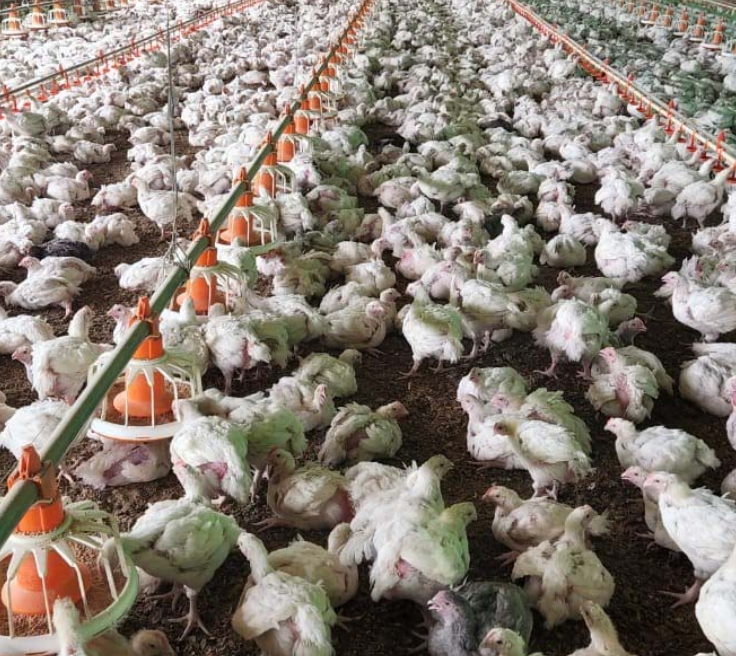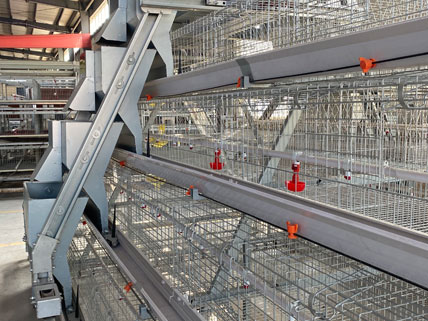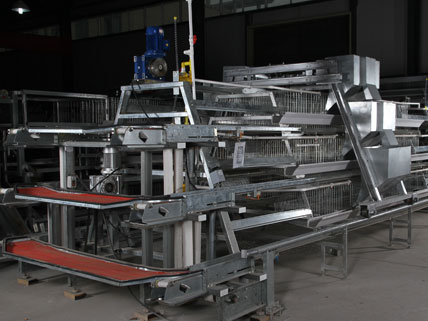Efficient and Sustainable Pan Feeding System for Poultry Farming
Understanding The Pan Feeding System In Poultry Farming
The Pan feeding system, also known as the deep litter system or slatted floor system, raises chickens on a concrete floor with bedding materials. It provides a warm and comfortable environment while effectively managing waste. This system is cost-effective, sustainable, and controls odor. Bedding materials like wood shavings create a layer called "litter" to absorb moisture and break down waste. One major benefit is its cost-effectiveness, requiring less labor and maintenance compared to daily cleaning methods. It also offers a natural waste management solution by decomposing waste into nutrient-rich fertilizer, reducing reliance on synthetic fertilizers. Proper management is crucial, including ensuring ventilation and monitoring litter moisture levels to prevent harmful gases.
In summary, the pan feeding system is a cost-effective and sustainable waste management approach. It provides a comfortable environment, reduces odor, and offers a natural fertilizer source. With careful management, farmers can successfully implement the deep litter system for efficiency, sustainability, and profitability.
How The Pan Feeding System Works In Poultry Farming
The pan feeding system operates by incorporating additional material into the uppermost layer, ensuring cleanliness in the coop while allowing the lower layers to decompose and enrich the underlying soil. This method is facilitated by the natural behavior of the chickens as they scratch, pick, and peck at the bedding beneath them, effectively mixing the materials, and enhancing aeration. As a result, the bedding develops beneficial parasites that thrive on the chicken manure and bedding, promoting a healthy and harmless environment.
A Comparison With Battery Cage Farming
When it comes to commercial layer rearing, the choice between battery cage system and deep litter system in poultry farming plays a significant role in egg production and overall profitability. Let's explore the differences between these two systems:

1. Hygiene and Disease Control: Battery cage systems prevent direct contact between chickens and their feces, reducing the risk of infection and the need for medication. But at the same time, cleaning can be challenging, and the buildup of manure can result in poor air quality and potential health issues for the chickens. While birds in deep litter poultry houses are kept in relatively hygienic environments hence, reducing the risk of disease outbreaks.
2. Feed Efficiency and Waste Reduction: Battery cage systems minimize feed wastage, as feeding and watering can be efficiently managed. In deep litter systems, feeding, and watering can be more challenging, with birds soiling the feed and water, increasing the risk of diseases like coccidiosis.
3. Chicken welfare: Limited space and confinement in the battery cage system compromise chicken welfare, leading to aggression and feather pecking. In contrast, the deep litter system offers more space, enhancing chicken welfare.
The choice between battery cage and deep litter systems should be based on factors such as farm goals, available resources, market demands, and regulatory requirements. Careful consideration and planning will help ensure a successful and sustainable poultry farming operation.
Points For Successful Poultry Farming With The Pan Feeding System
There are some key points to pay attention to if you are going to raise chickens in the slatted floor system:
Choose a good bedding material for the poultry house
Absorbency and dryness are the priorities to consider when you choose a suitable bedding material.
Provide Proper Nutrition for Chickens
Make sure you provide a sufficient and balanced diet to meet chickens’ nutritional requirements.
Careful Handling of feeders and drinkers
Adjust the proper height of the feeders and drinkers for ease of access according to the growth of chickens.
Enforce strict biosecurity measures
Maintain cleanliness at the entrance and within the poultry house to prevent infections from bacteria and viruses.
Disease control and management
Try to increase susceptibility to diseases in deep litter systems and regularly monitor for signs of illness.
For people with limited initial funds for their poultry farming venture, slatted floor system is an easy option to begin with. So, if you find yourself in a situation where your chicken farming project has a small budget, this housing system may be a suitable choice. I believe with proper management and adherence to key points, every farmer can gain success in the poultry farming business.

 Rre
Rre







Post your divine reply